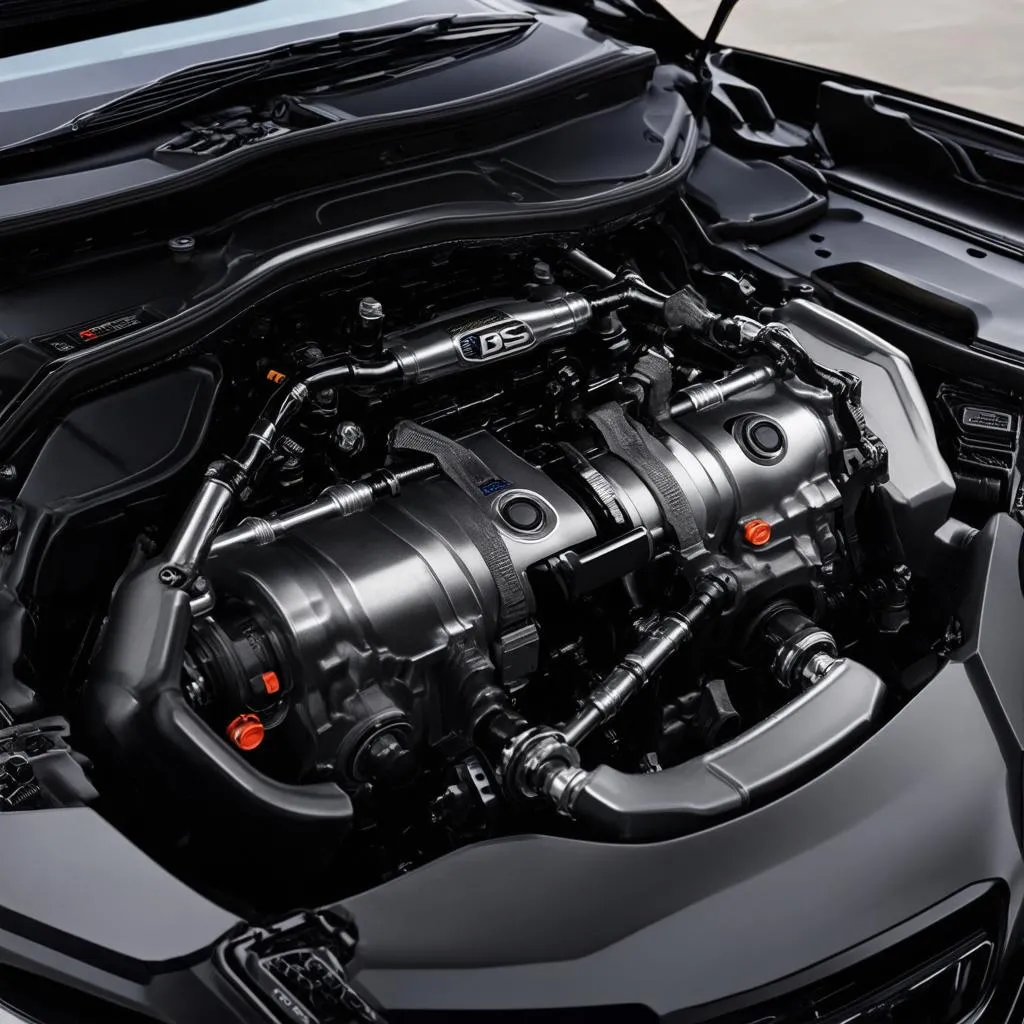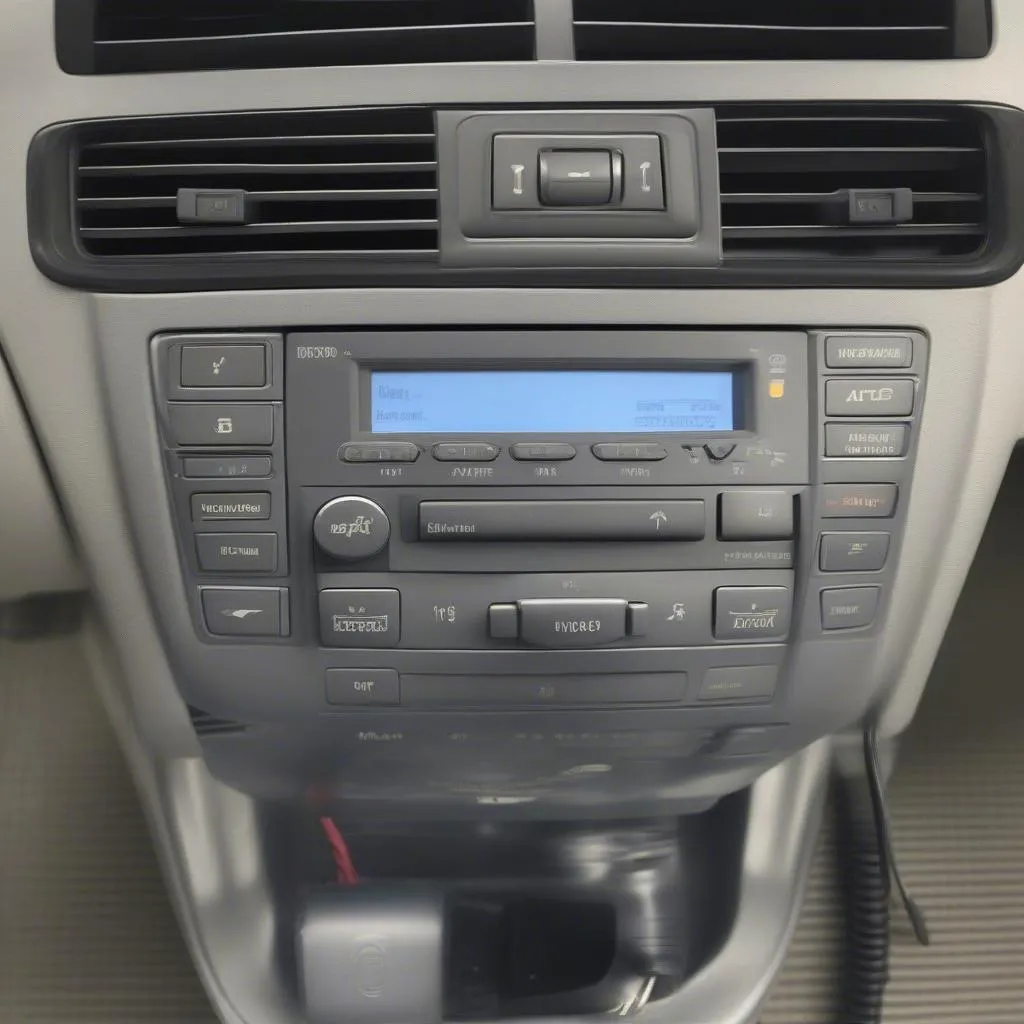VCDS throttle pedal adaptation is a crucial procedure for maintaining optimal vehicle performance. It involves recalibrating the throttle position sensor to ensure accurate communication with the engine control unit (ECU). This article provides a comprehensive guide to understanding, diagnosing, and performing this procedure using VCDS, a powerful diagnostic tool for Volkswagen, Audi, Seat, and Skoda vehicles.
After performing certain maintenance procedures, like cleaning the throttle body or replacing components related to the throttle system, VCDS throttle pedal adaptation is often necessary. It helps resolve issues such as rough idling, poor acceleration, and limp mode. Accurate throttle pedal adaptation ensures that the engine receives the correct signals from the pedal, resulting in smooth and predictable engine response. This process also helps the ECU learn the new positions of the throttle plate, optimizing fuel efficiency and overall drivability. Knowing how to perform this procedure can save you time and money. More importantly, vcds throttle body alignment can enhance the safety and performance of your vehicle.
What is VCDS Throttle Pedal Adaptation?
VCDS throttle pedal adaptation is the process of resetting the learned values of the throttle position sensor within the vehicle’s ECU. The throttle position sensor (TPS) informs the ECU about the position of the throttle pedal, which directly impacts the amount of air and fuel entering the engine. Over time, the learned values of the TPS can become skewed, leading to performance issues. This is where VCDS comes in handy. By using the software, you can reset these values, allowing the ECU to relearn the correct throttle pedal position and restore optimal engine performance. This process ensures the correct correlation between the pedal position and the throttle plate angle, leading to a more responsive and efficient engine.
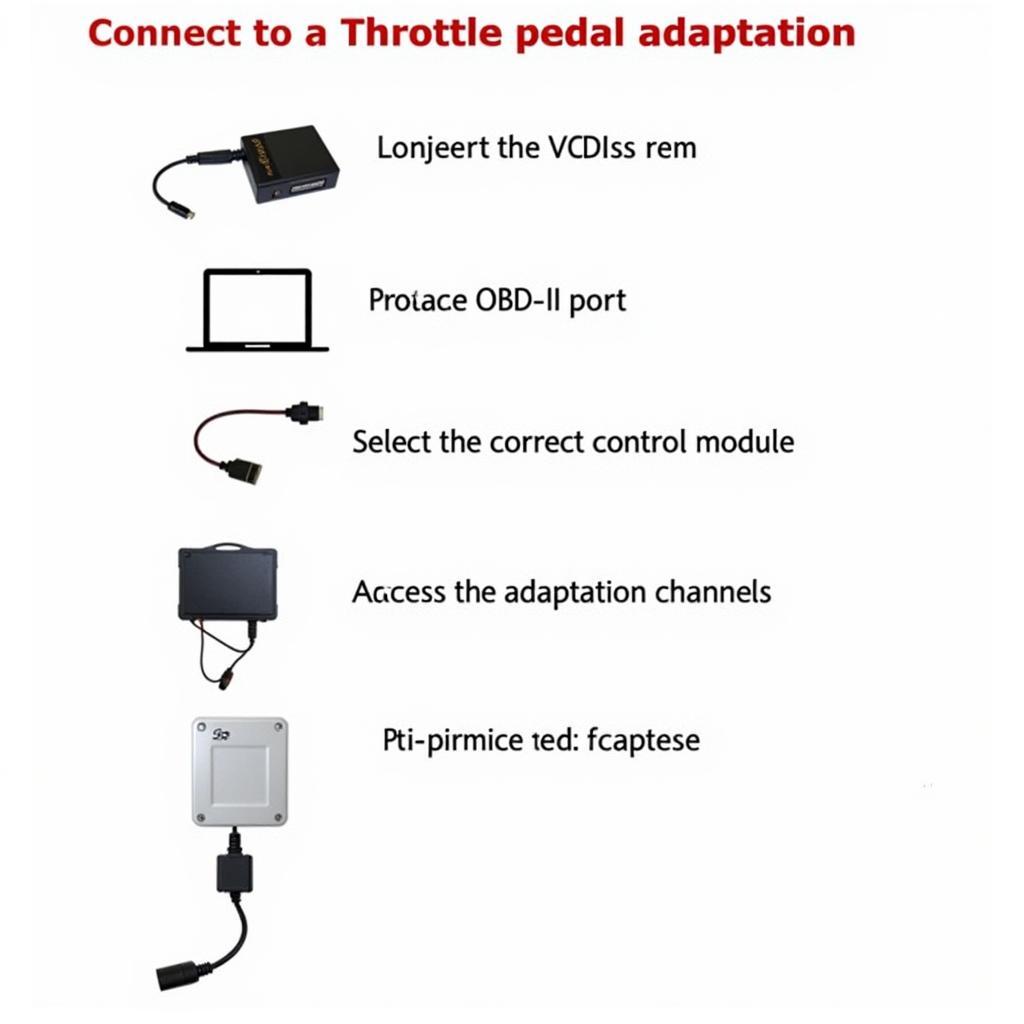 VCDS Throttle Pedal Adaptation Process
VCDS Throttle Pedal Adaptation Process
Why is VCDS Throttle Pedal Adaptation Important?
A properly calibrated throttle pedal is essential for maintaining optimal engine performance, fuel efficiency, and smooth driving experience. Without proper adaptation, the vehicle may exhibit symptoms such as erratic idling, hesitation on acceleration, or even limp mode. Incorrect throttle pedal readings can mislead the ECU, causing it to deliver improper fuel and air mixtures, ultimately impacting performance and fuel economy. For instance, a faulty signal could lead to the engine receiving too much or too little fuel, resulting in poor acceleration or reduced fuel efficiency.
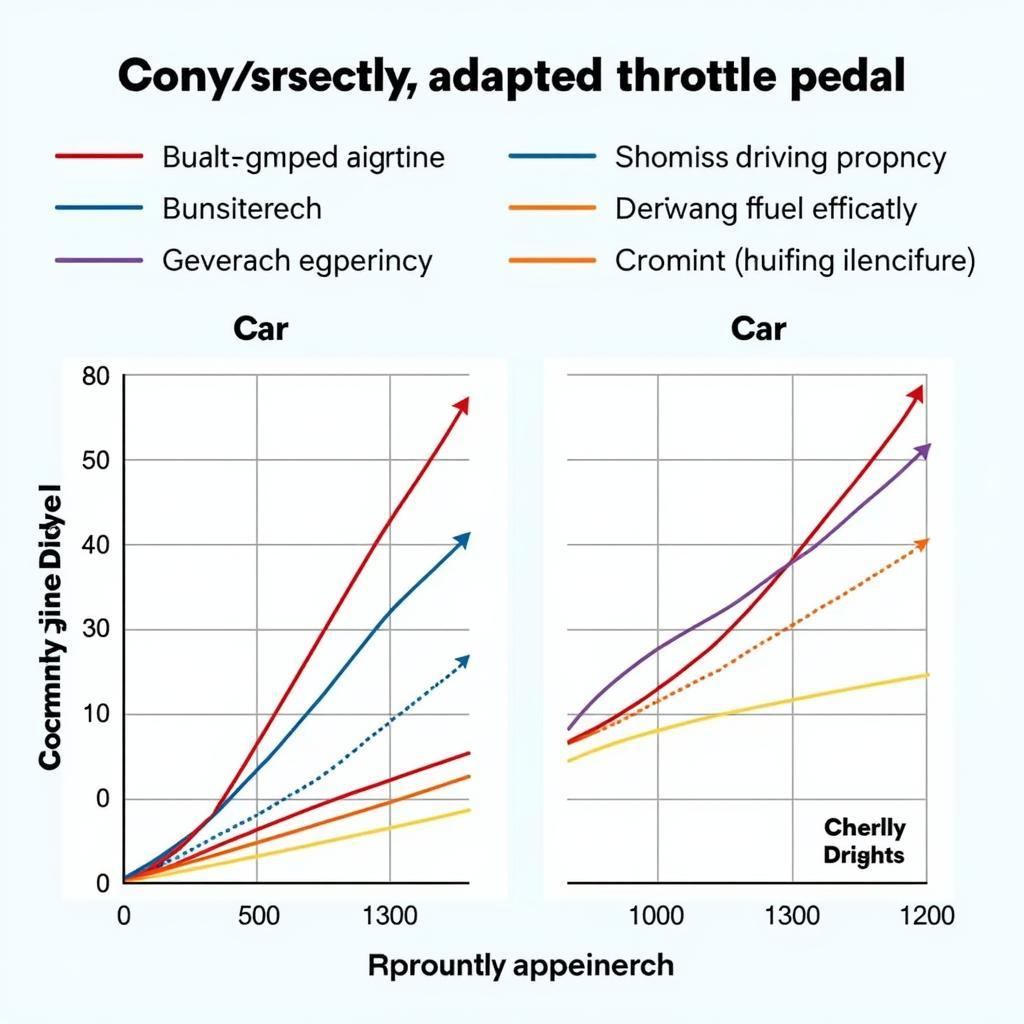 Importance of VCDS Throttle Pedal Adaptation
Importance of VCDS Throttle Pedal Adaptation
How to Perform VCDS Throttle Pedal Adaptation
Performing VCDS throttle pedal adaptation typically involves the following steps:
- Connect the VCDS interface to the vehicle’s OBD-II port.
- Turn the ignition on but do not start the engine.
- Open the VCDS software and select the appropriate control module for the engine (usually labeled as “Engine” or a similar designation).
- Go to VCDS Adaptation Channels. Locate the adaptation channel for the throttle pedal position sensor. The specific channel number can vary depending on the vehicle model. Consult your vehicle’s service manual or online resources for the correct channel number.
- Read the current adaptation value.
- Enter the specified adaptation value for your vehicle. This value can often be found in the service manual or through online resources.
- Save the new adaptation value.
- Turn the ignition off and wait for a few seconds.
- Turn the ignition back on and check for any fault codes. Clear any codes if necessary.
- Test drive the vehicle to ensure the adaptation was successful.
You can find a useful resource on vcds adaptation channel list on our website.
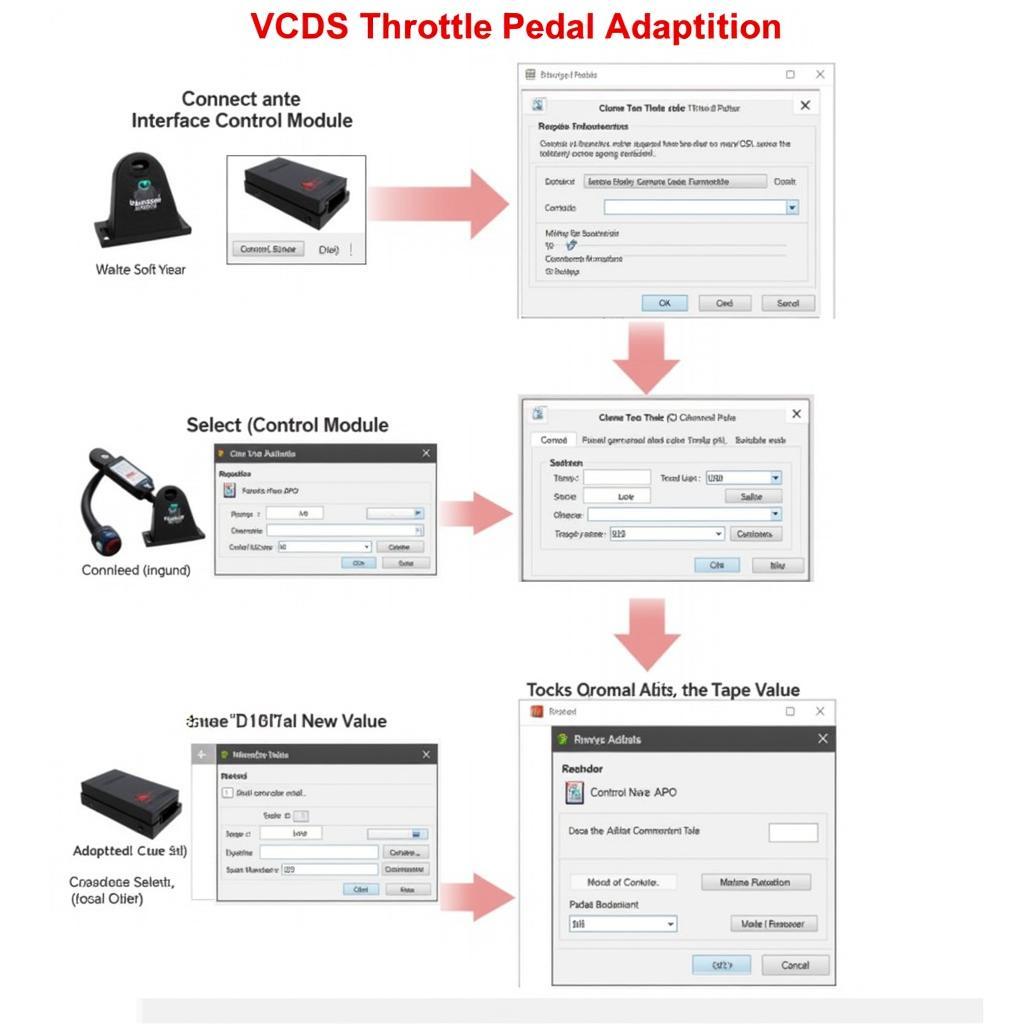 Performing VCDS Throttle Pedal Adaptation
Performing VCDS Throttle Pedal Adaptation
Common Issues and Troubleshooting
Sometimes, the adaptation procedure may not be successful. Here are some common issues and troubleshooting tips:
- Incorrect Adaptation Channel: Ensure you are using the correct adaptation channel for your specific vehicle model.
- Low Battery Voltage: A low battery can interfere with the adaptation process. Make sure the battery is fully charged.
- Other Fault Codes: Other fault codes in the engine control module can prevent successful adaptation. Address any other codes before attempting the throttle pedal adaptation.
- Mechanical Issues: Mechanical issues with the throttle body, such as a sticking throttle plate, can also cause problems. Inspect the throttle body for any physical issues.
You can learn more about other procedures using VCDS, such as 01m reset trans vcds or vcds basic settings groups.
Conclusion
VCDS throttle pedal adaptation is a vital maintenance procedure that can help restore optimal engine performance and improve drivability. By understanding the process and following the steps outlined in this guide, you can successfully perform this adaptation and ensure your vehicle runs smoothly and efficiently. Remember to consult your vehicle’s service manual or reliable online resources for specific instructions related to your car model.
FAQ
- What is VCDS? VCDS is a diagnostic software used for Volkswagen, Audi, Seat, and Skoda vehicles.
- Why would I need to perform a throttle pedal adaptation? Adaptation is necessary after certain maintenance procedures or if the throttle pedal is not functioning correctly.
- How often should I perform a throttle pedal adaptation? Typically, only after specific maintenance work or if you experience related issues.
- Can I damage my car by performing this procedure incorrectly? It’s unlikely, but using the wrong adaptation channel could cause performance issues.
- What if the adaptation is unsuccessful? Double-check the adaptation channel, battery voltage, and for other fault codes.
- Where can I find the correct adaptation channel for my car? Consult your vehicle’s service manual or reputable online resources.
- Do I need special tools to perform this procedure? You’ll need a VCDS interface and software.
Need help? Contact us via Whatsapp: +1 (641) 206-8880, Email: CARDIAGTECH[email protected] or visit us at 276 Reock St, City of Orange, NJ 07050, United States. Our customer service team is available 24/7.

